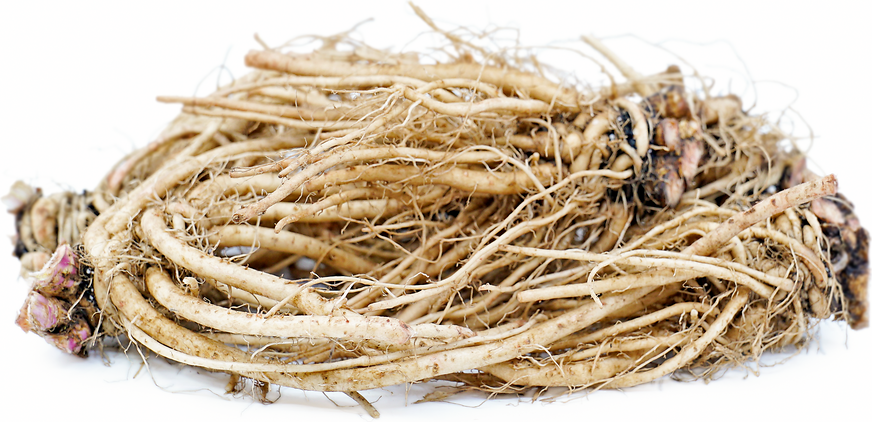


Chicory Root
Estimated Inventory, bunch : 0
Description/Taste
Chicory root can vary in size from small to large depending on cultivation conditions and can grow up to thirty centimeters in length. The elongated, slender root has a tapered shape that narrows to a thin point on the non-stem end, similar in appearance to a parsnip. The cream-colored to light tan skin is thin, smooth, and firm, covered in small root hairs. Underneath the surface, the flesh is white to ivory and is dense, aqueous, and crisp. Chicory root has a robust, earthy, and bitter flavor, and is recommended to be used very sparingly when added to culinary applications.
Seasons/Availability
Chicory root is available year-round.
Current Facts
Chicory root, botanically classified as Cichorium intybus var. sativum, is slender, underground, edible taproots that belong to the Asteraceae family. Chicory root has been cultivated for hundreds of years and is most commonly used as a coffee substitute, especially during times of coffee shortages and economic decline. Despite its limited use, Chicory root has recently found a new purpose by adding fiber to commercial food products. The root contains a high amount of inulin, which is a fiber that can be added to protein bars, baked goods, and cereals.
Nutritional Value
Chicory root is a good source of vitamin C and antioxidants which can help boost immunity and contains beta-carotene, potassium, phosphorus, folate, manganese, and inulin, which is a non-soluble fiber. The tuber also contains anti-inflammatory and antibacterial properties to help cleanse and purify the body.
Applications
Chicory root is most commonly used dried, granulated, and roasted as a coffee substitute or as an additive to coffee grounds creating a rich, robust flavor. Dried pieces of the root can also be steeped in boiling water to make a tea, and breweries use the roots to add a rich, earthy flavor to beer. In addition to beverages, Chicory root can be boiled and consumed, or the roasted, ground root powder can be used sparingly to flavor sauces and gravies. The root will keep for a couple of weeks when stored in a cool, dry, and dark place. When roasted and ground, the powder will keep up to one year when stored in the refrigerator.
Ethnic/Cultural Info
Throughout European history, Chicory root has been used medicinally to help with digestion, flatulence, and abdominal issues. Ancient Romans used Chicory root as a cleansing medicinal herb and prescribed it to patients to purify the blood. Chicory leaves were also applied on the skin and were believed to help with inflammation. In addition to medicinal uses, Chicory root was a popular animal feed for livestock throughout Europe.
Geography/History
Chicory root is native to Europe and has been cultivated since ancient times, dating back to the ancient Egyptians in 300 BCE. When coffee was introduced to Europe, the root began to be dried and mixed in as a caffeine-free alternative and was quickly spread across the continent. Chicory was then brought to the United States from Europe in the 18th century. Today Chicory root is still cultivated in Europe and can be found fresh at local markets or dried and ground at specialty grocers in Africa, Asia, Europe, select regions in South America such as Chile, and in the United States.
Recipe Ideas
Recipes that include Chicory Root. One
| Eat Weeds |
|
Dandelion Root Coffee |
| Sweet Potatoes and Social Change |
|
Herbal "Coffee" |
| The Kitchn |
|
Dandelion and Chicory Chai |
| Honest Food dot Net |
|
Chicory Coffee |




